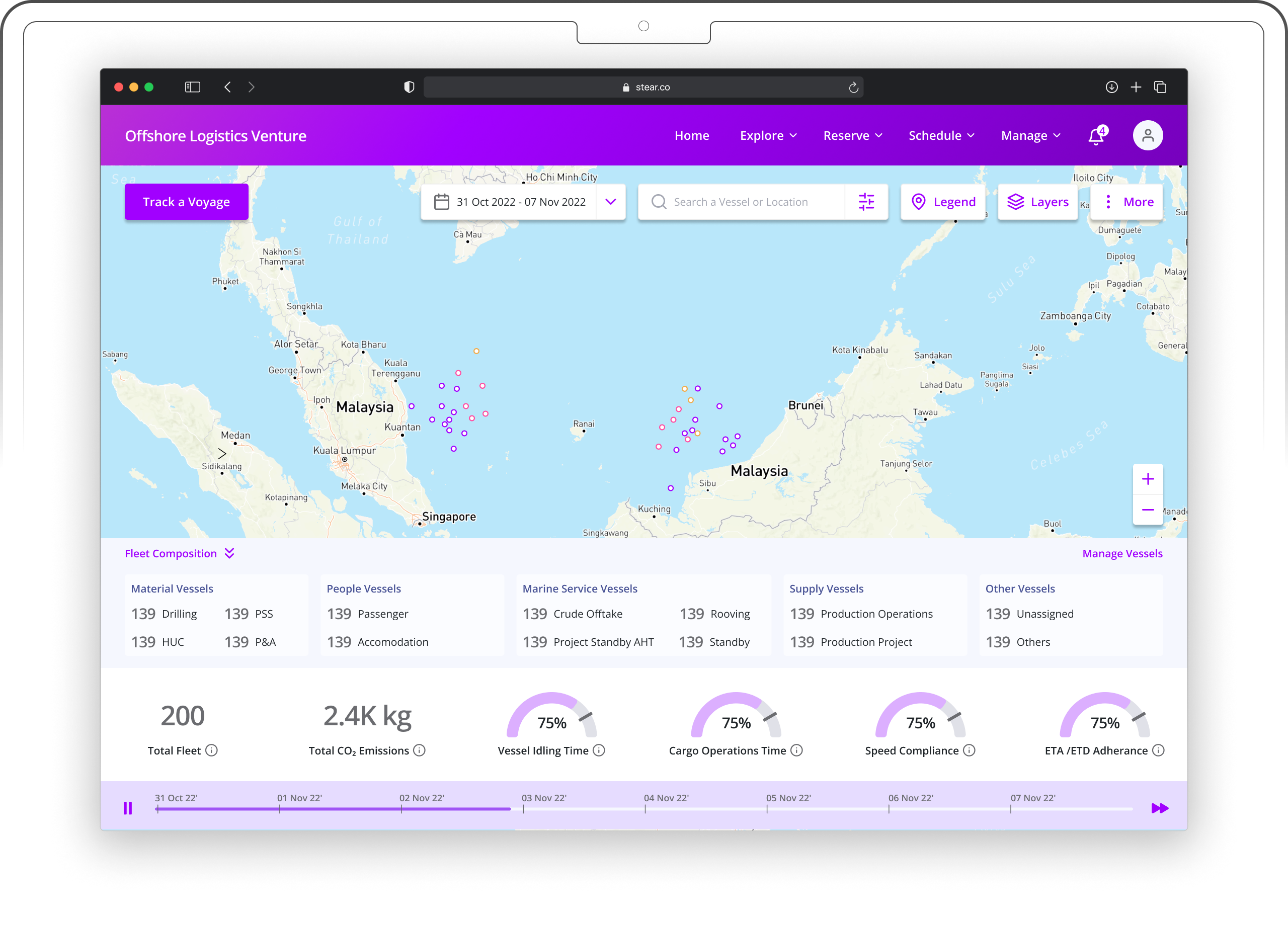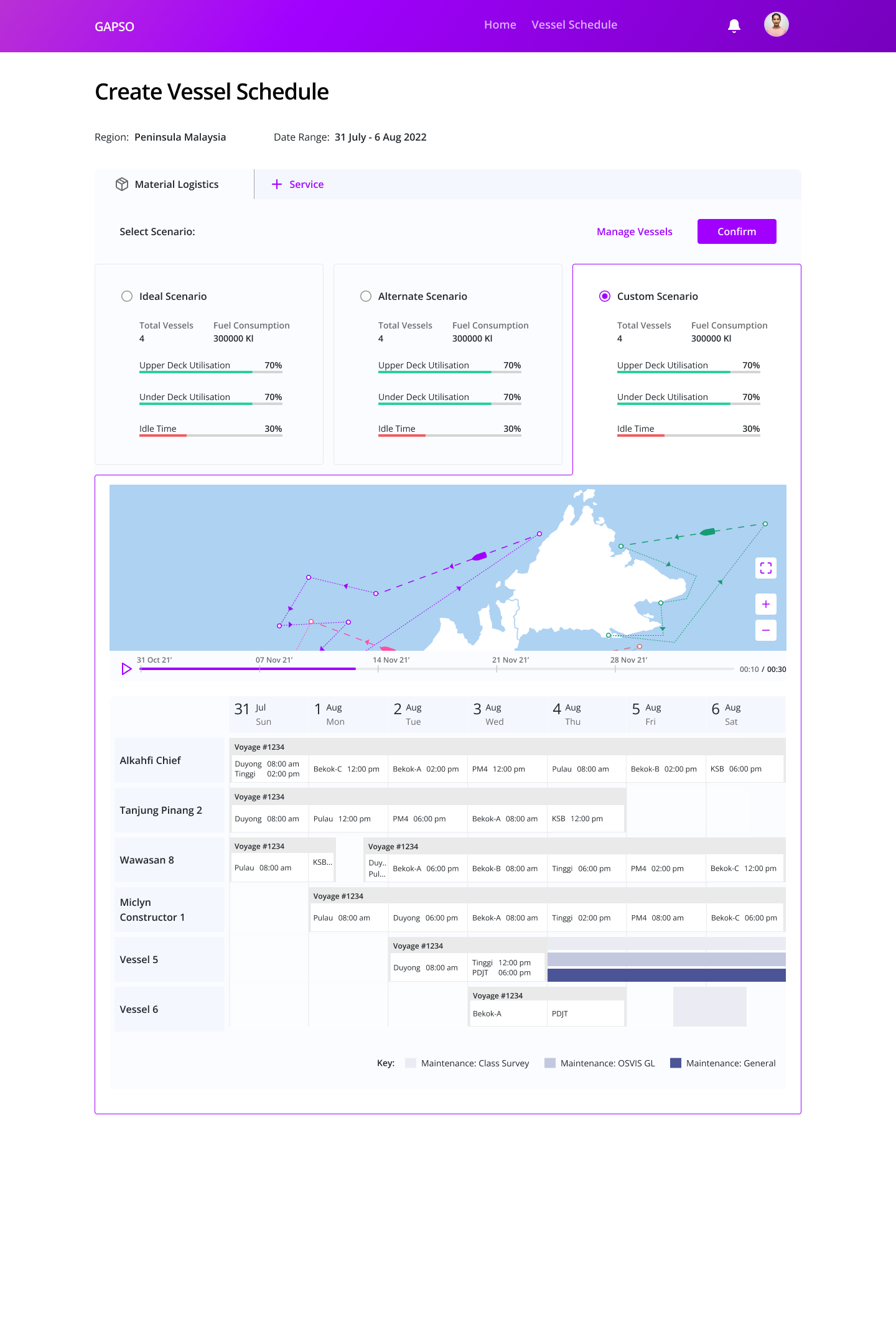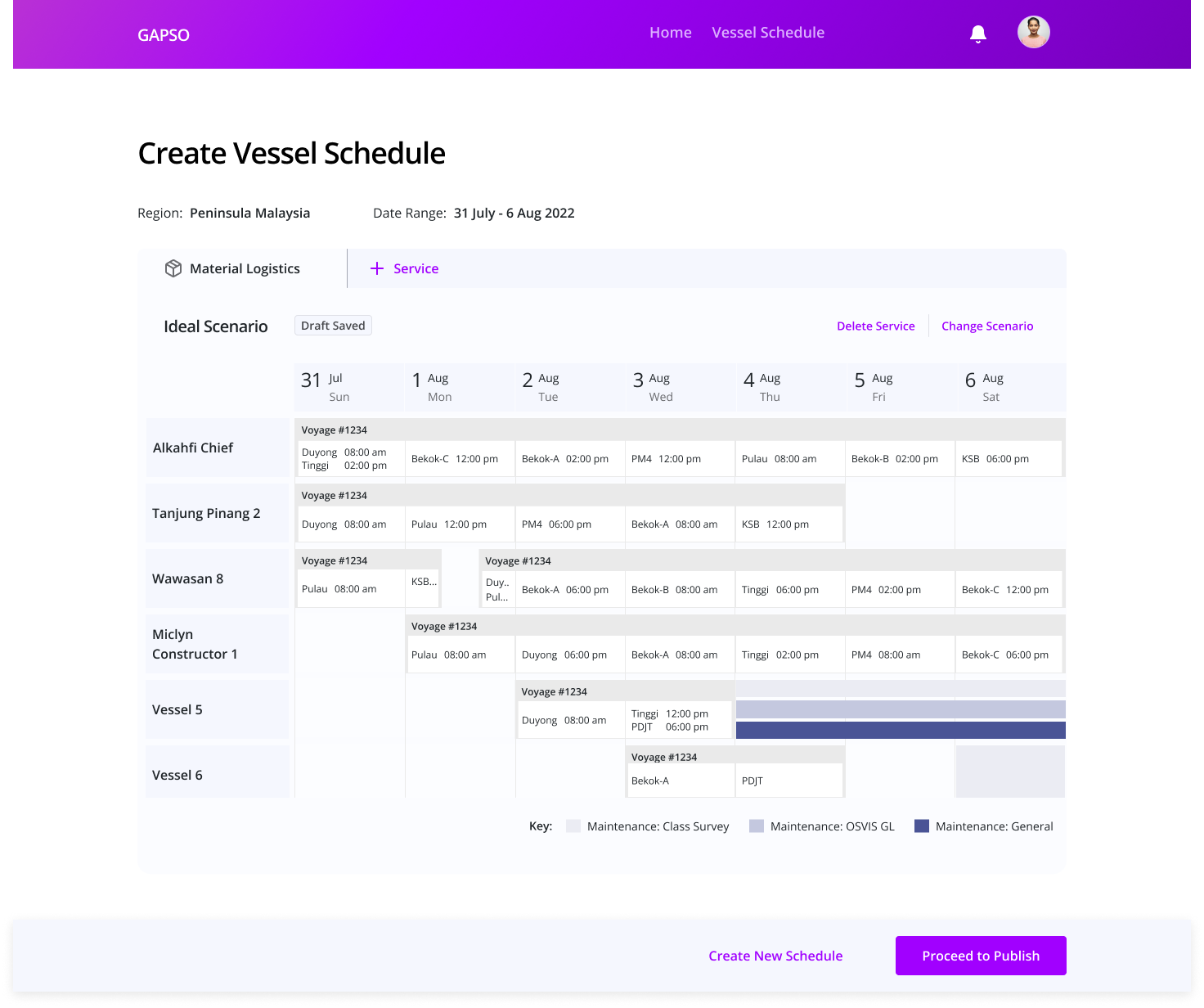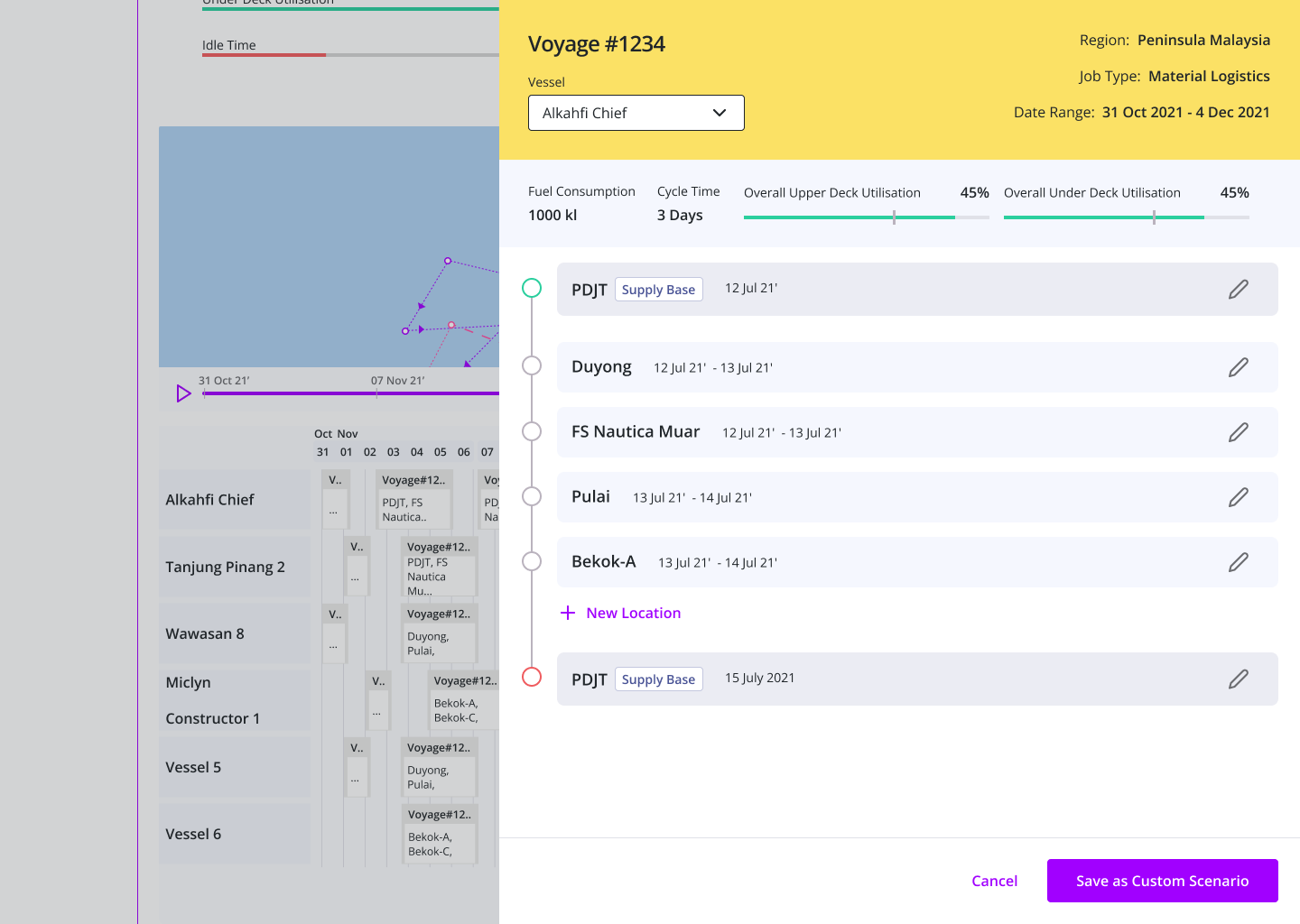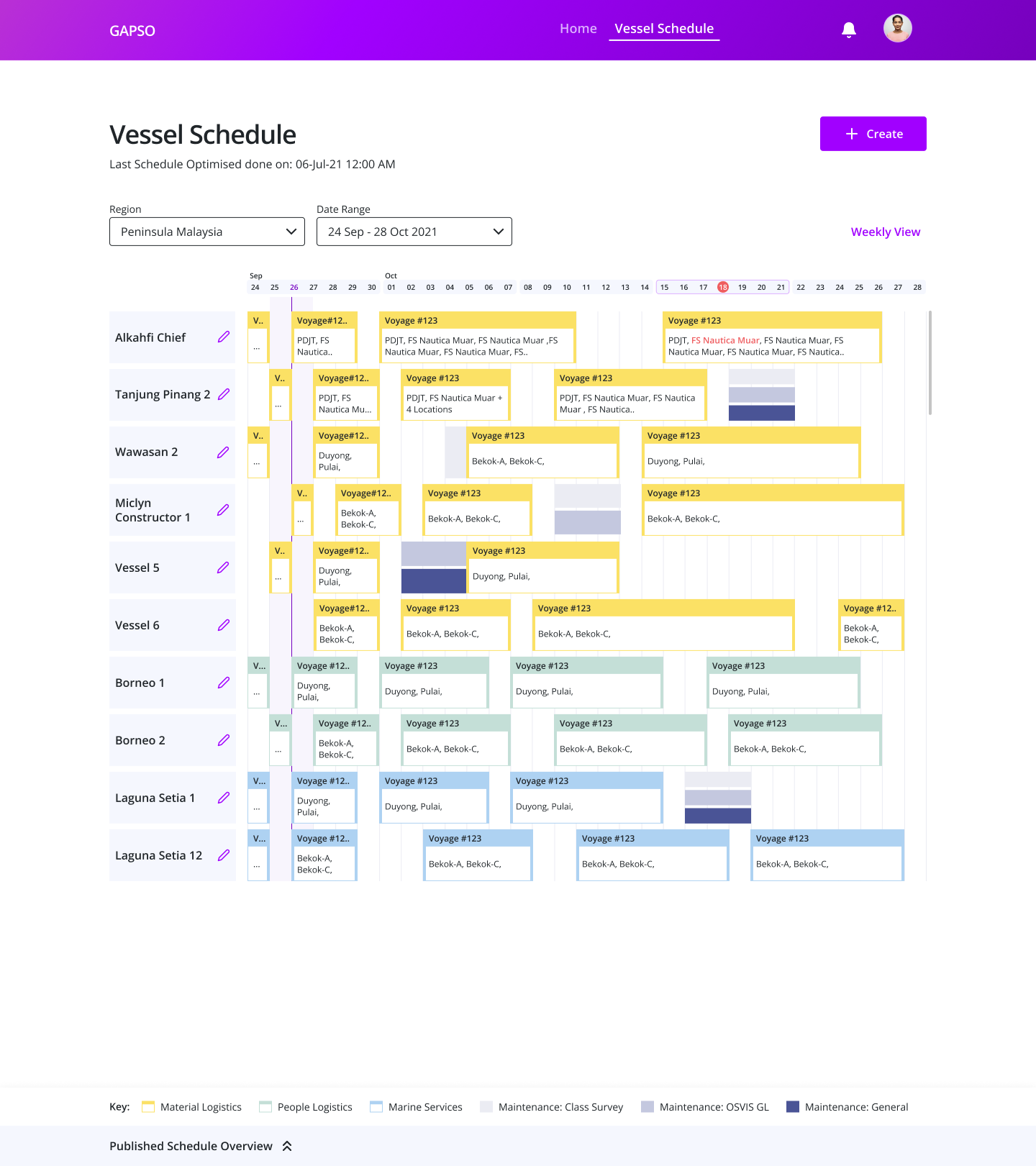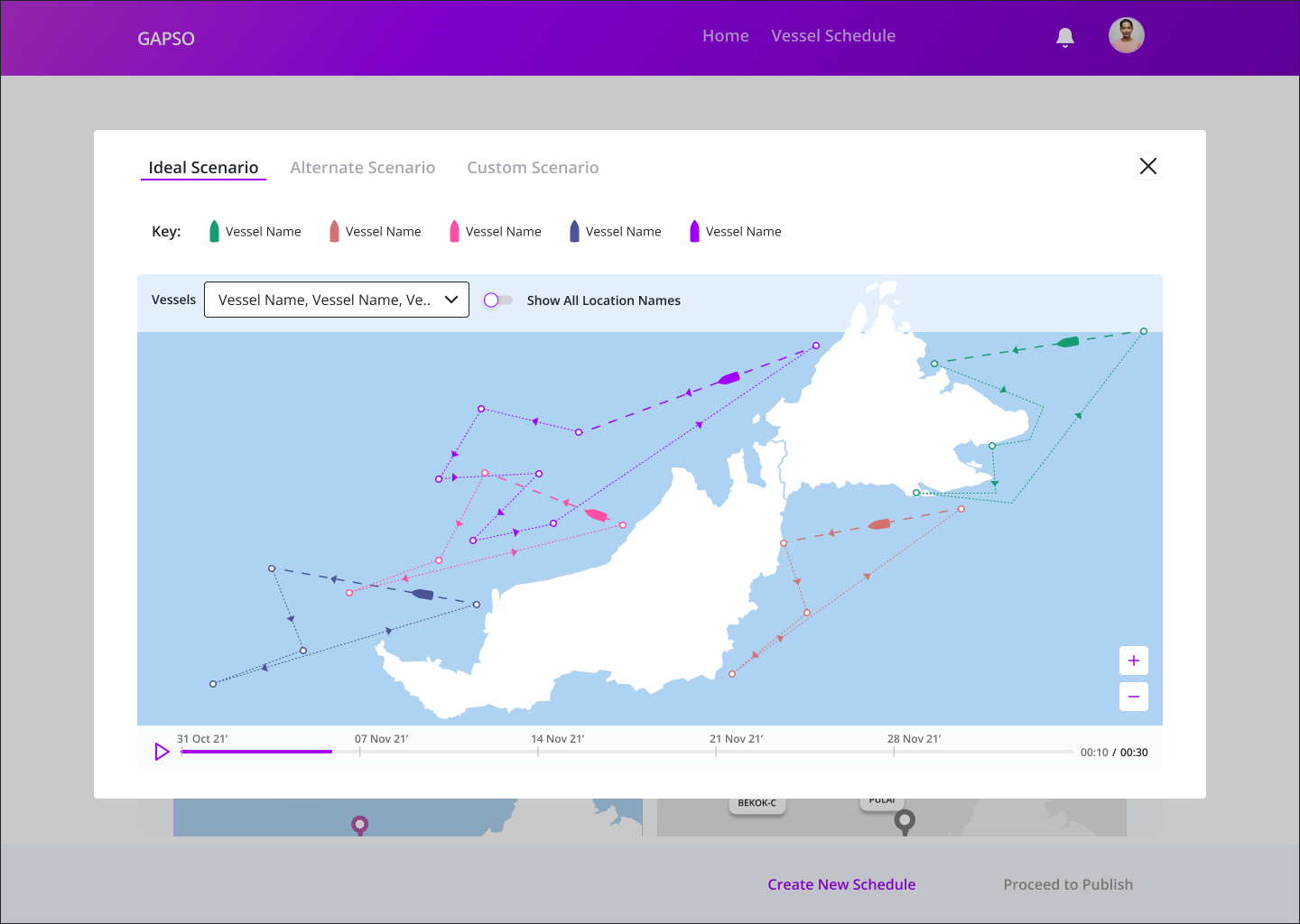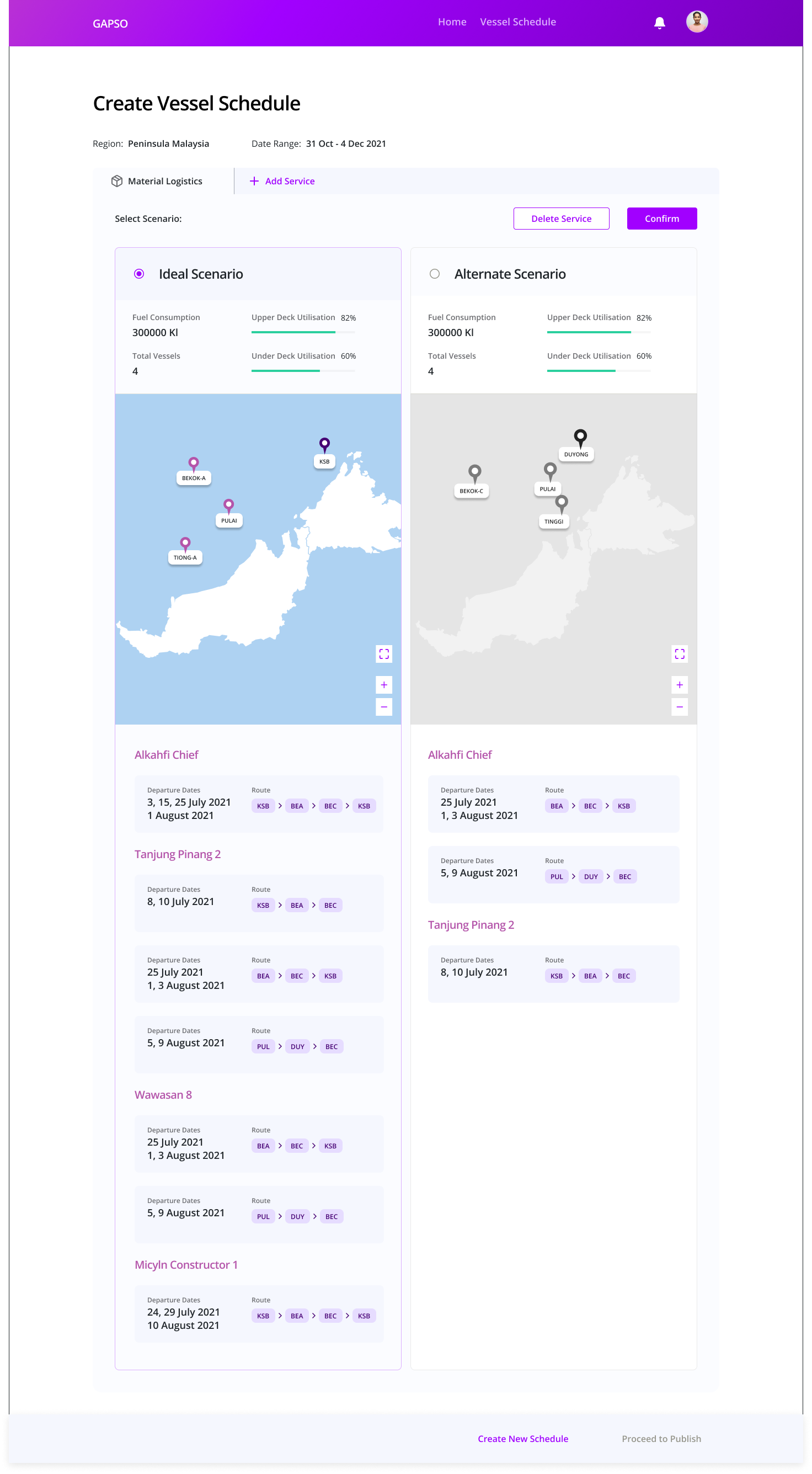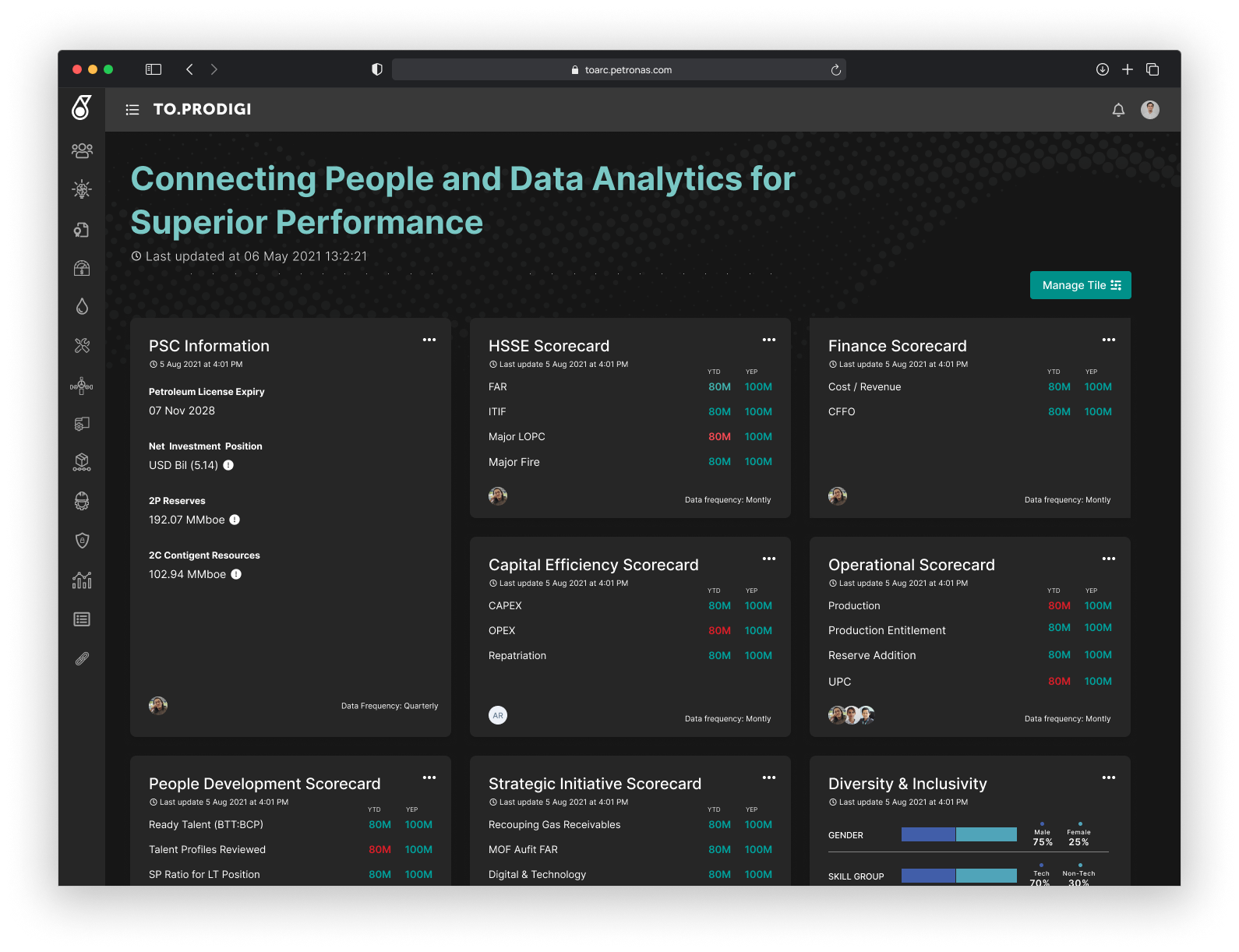CASE REVIEW
STEAR is an innovative logistics solutions provider that aims to optimize logistics spend and enhance business operations efficiency while reducing carbon footprint. Their services offer a full suite of logistics solutions, including data-driven demand aggregation, smart planning for routing and scheduling, near real-time tracking of voyages, and the introduction of new services based on performance analytics. STEAR’s approach is to work closely with clients through an end-to-end partnership, focusing on continuous improvement opportunities in logistics. They emphasize sustainability within the logistics ecosystem and collaborate with customers to tailor solutions that meet specific business needs.
CASE TIMELINE
Feb 2022 — May 2022
MY ROLE
This project was a collaboration between PETRONAS, Accenture, and Microsoft. I was working as a product designer from the PETRONAS side, alongside three other product designers. My primary focus was on designing the Optimization Module, which aimed to enhance the efficiency of vessel scheduling and transportation planning.
PROBLEM STATEMENT
There was a significant demand for transporting personnel, goods, oil, and gas between stations. However, the planning and execution of these logistics operations were inefficient due to the following issues:
- Communication was primarily done via email, leading to disorganization.
- Vessel planning and scheduling lacked optimization, resulting in increased costs and fuel consumption.
- Multiple stakeholders (requesters, planners, transport managers, and decision-makers) struggled to coordinate effectively.
The goal of the optimization module was to streamline scheduling, reduce operational inefficiencies, and minimize environmental impact.
KEY USERS
The platform was designed to serve multiple user personas:
- Requesters: Various stakeholders who needed transportation services.
- Planners: Responsible for scheduling and assigning vessels.
- Transport Managers: Overseeing transportation execution and adjustments.
- Decision-Makers/Managers: Approving schedules and ensuring alignment with business objectives.
RESEARCH & INSIGHTS
To understand user needs and pain points, I conducted user interviews with different stakeholders. Key insights from the research included:
1. Inefficient Communication & Manual Processes
- Planners relied heavily on emails and spreadsheets, leading to miscommunication and scheduling errors.
- Last-minute changes were difficult to track and implement efficiently.
2. Lack of Visibility
- Transport managers struggled to get a real-time overview of vessel availability and utilization.
- Requesters often had no insight into scheduling constraints, leading to unrealistic transport demands.
3. Ineffective Scheduling Decisions
- Planners found it difficult to optimize schedules manually while balancing cost, fuel efficiency, and operational constraints.
- Decision-makers lacked data-driven insights to approve or modify schedules effectively.
SOLUTION & APPROACH
To address these challenges, I followed a structured UX design process:
1. Understanding the Workflow
- Mapped out the existing user journey to identify inefficiencies.
- Documented how requests were being made, processed, and approved.
- Identified key pain points for each user persona.
2. Exploring Scheduling Solutions
- Experimented with different approaches for optimizing vessel schedules.
- Explored data visualization techniques to help planners make better decisions.
3. Designing the UI/UX
- Created wireframes and prototypes for an interactive scheduling interface.
- Ensured the interface allowed planners to compare multiple scheduling scenarios.
- Developed a real-time tracking dashboard for better visibility.
4. Usability Testing
- Conducted usability tests with planners and transport managers.
- Gathered feedback to refine interactions, ensuring ease of use and efficiency.
- Iterated on the design to improve clarity and accessibility.
SOLUTION OVERVIEW
The Create Vessel Schedule interface includes:
- Scenario Comparison: Users can choose between different scheduling scenarios based on vessel utilization, idle time, and fuel consumption.
- Interactive Map: Provides a visual representation of vessel routes, aiding in decision-making.
- Voyage Schedule Table: Displays detailed schedules for each vessel, making it easier for planners to manage.
- Maintenance Indicators: Ensures planners account for vessel maintenance when scheduling.
IMPACT & RESULTS
Before this portal, communication and scheduling were handled manually via email. After implementation, we observed significant improvements:
- 50% reduction in scheduling errors due to automated optimization.
- 40% reduction in idle time by balancing vessel utilization.
- 25% improvement in fuel efficiency due to better route planning.
- Real-time tracking allowed transport managers to adjust schedules dynamically.
CONCLUSION
The logistics optimization module significantly improved scheduling efficiency, reduced costs, and minimized carbon footprint. By transitioning from a manual, email-based system to an intelligent scheduling platform, STEAR was able to enhance operational efficiency and sustainability.
This project reinforced the importance of user-centered design in complex logistics environments. By deeply understanding user workflows and pain points, we were able to build a system that not only met business needs but also improved daily operations for multiple stakeholders.


